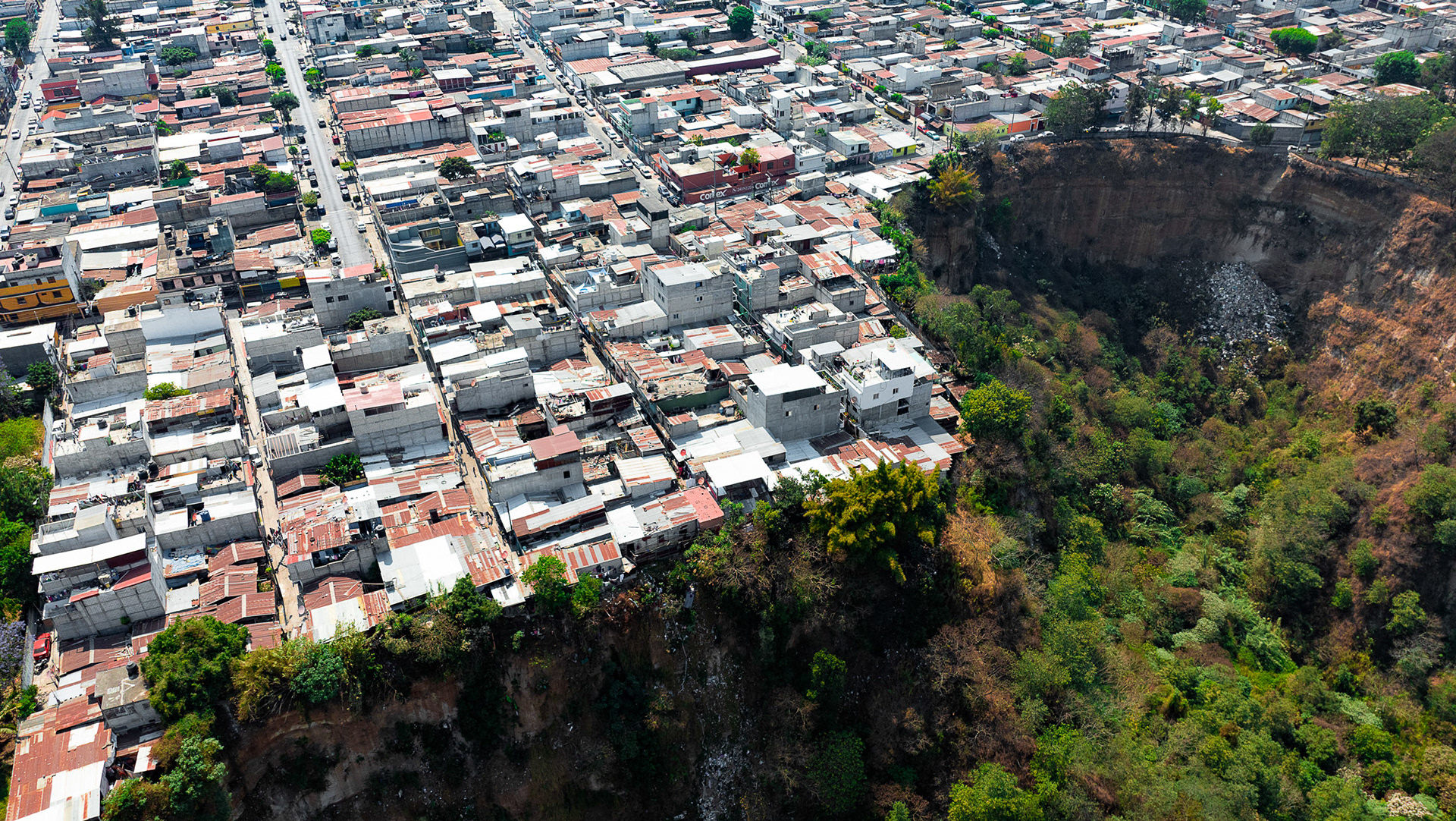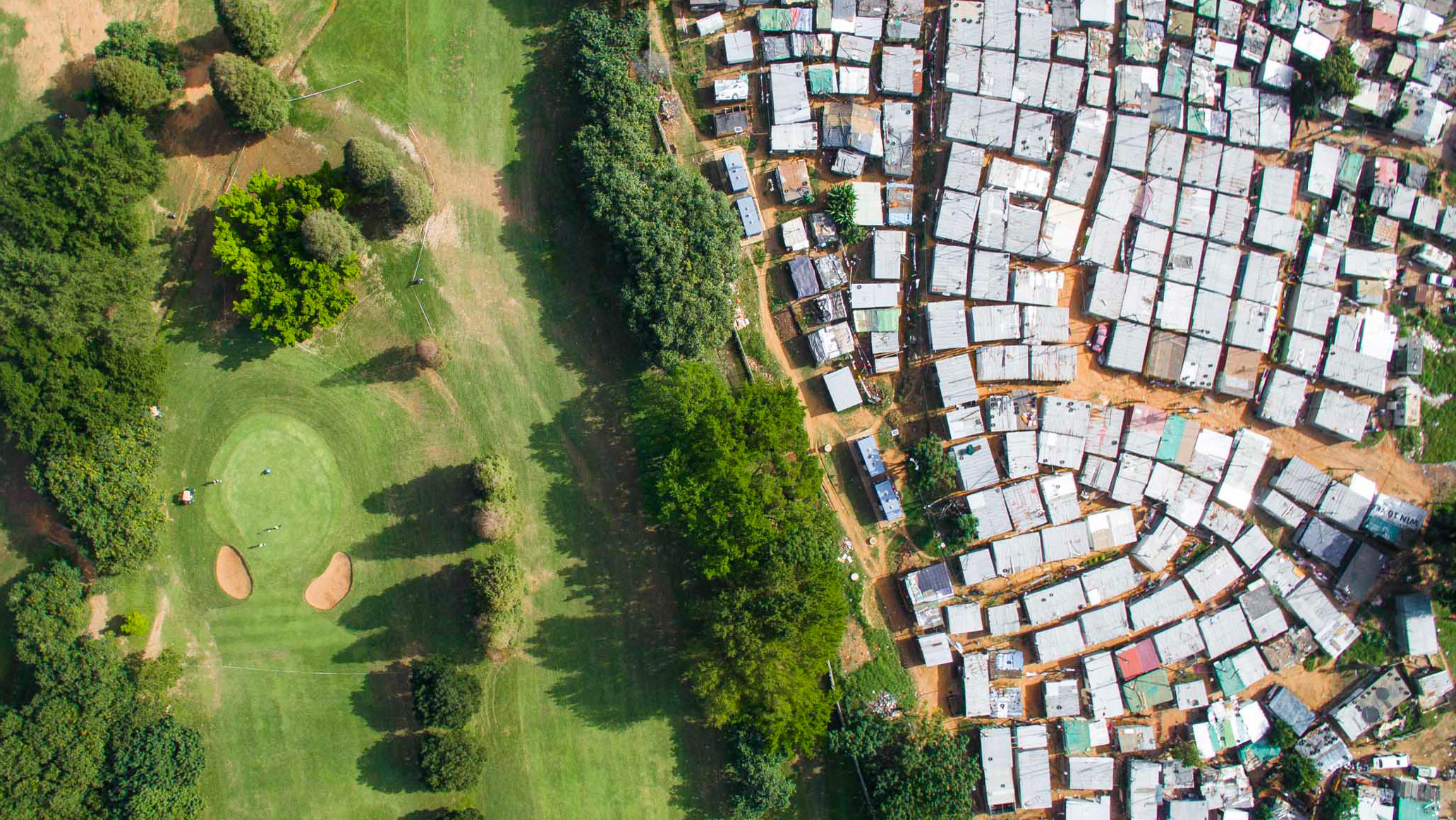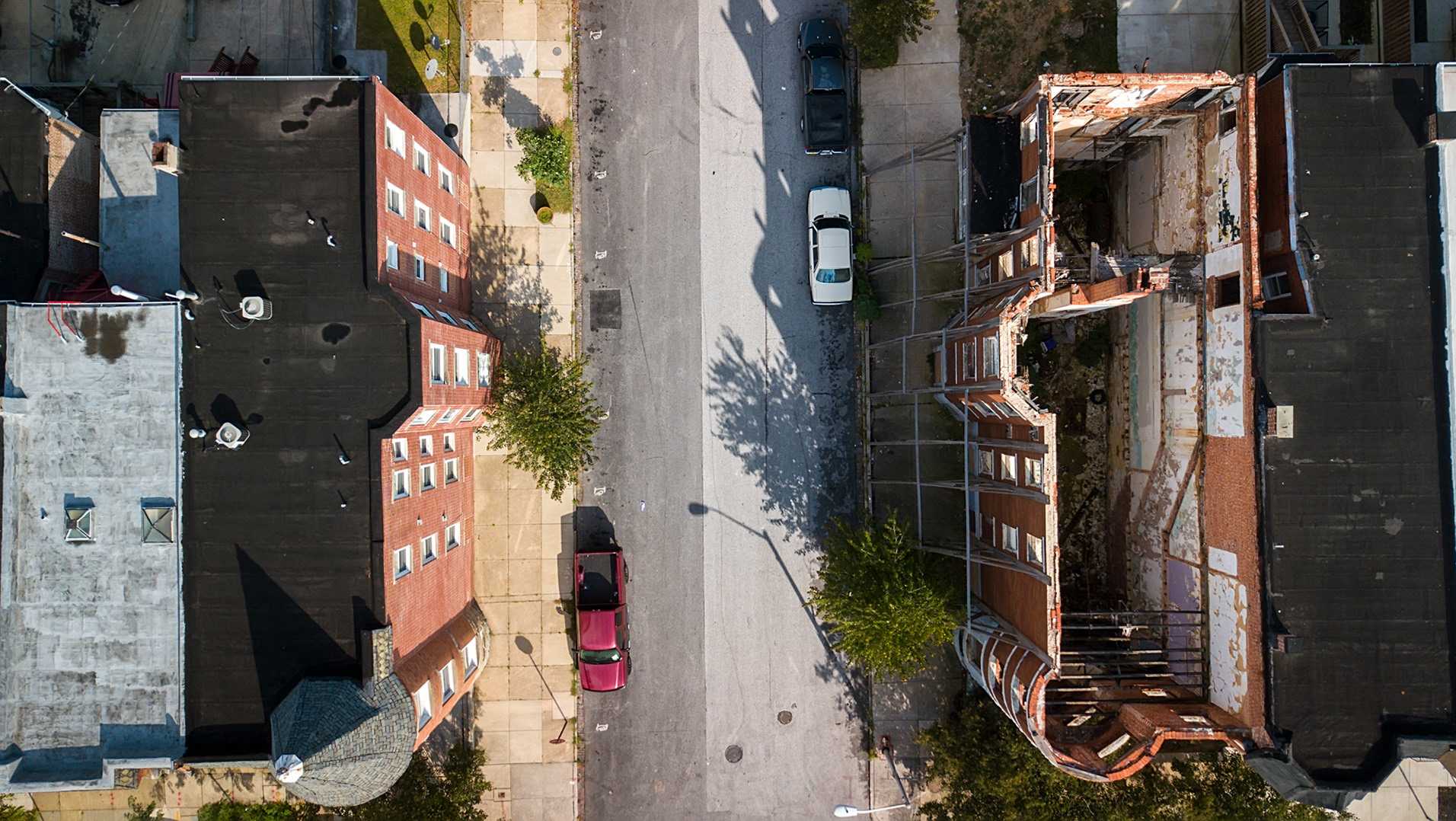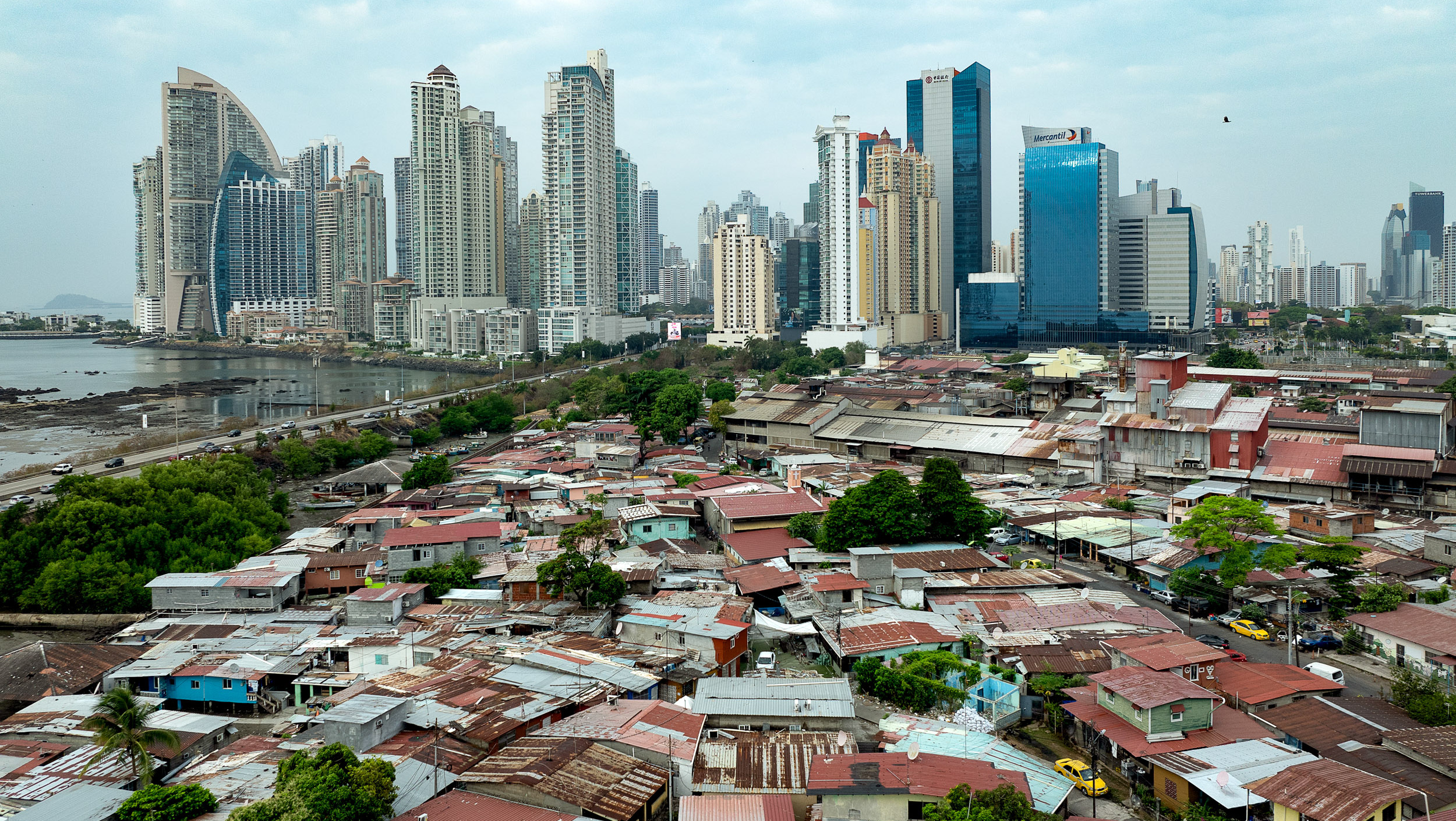Rich neighborhoods are jammed up against very poor areas called “villas miserias,” or misery settlements. This one, near San Isidro, is near the site of a wall that was built and quickly dismantled, making international news and called the "Wall of Discord" in Argentine media. Today there are still walls, barbed wire, and a yawning gap between them.
Villa 31 (now known as Barrio Padre Mugica) is a dense mix of informal and formal buildings, with a mix of residents from Argentina and other South American countries.
Villa 31 is separated from the downtown core of Buenos Aires by a rail yard and crossed only by a highway.
Villa 31 and downtown Buenos Aires.
The major highway linking downtown to the northern suburbs passes directly over Villa 31.
Homes have been built in every conceivable place, including between and under the highway over Villa 31.
A highway crossing Villa 31 with the skeleton of an unfinished ramp looming above.
The view from Villa 31.
Inequality in Buenos Aires Province, to the northeast of the city. Developments in the Paraná river delta are changing the face of the province closest to the river's edge.
Swimming pools and fences delineate the suburbs into rich and poor in BA province, north of the city.
The developments on wetlands north of the city are called "Nordelta" and are on land reclaimed from the Rio Plata.
Villa Rodrigo Bueno is located on some of the most expensive land in the city, on an ecological park in the shadow of the city's financial district. The city is currently embarking on an urbanization plan to upgrade the informal homes to blocked apartments. Across the narrow channel, a dilapidated amusement park sits, waiting for a new lease on life.
The Alvear Tower, the tallest building in Buenos Aires and a luxury apartment block.
Villa Rodrigo Bueno.
The towns of Quilmes (left) and Avellaneda (right) are split by Calle Caviglia. The informal section in Quilmes, called Villa Azul, was the site of the country's first total quarantine, enforced by the military to mitigate a fast-spreading outbreak in May 2020. No such quarantine existed on the other side. Hailed as a success by the Argentine media, the spread of the virus and the response point to the tale of two worlds that came into sharp focus around the world during 2020.
In a June 2020 interview Health Minister Jonathan Konfino said, "...this has confirmed that for the occurrence of diseases, the determining factor is much more the postal code, rather than the genetic code. Today that street has become a symbol of injustice, which shows the inequality we live in and the need to advance the political decision to urbanize the neighborhood."
Quilmes and Avallaneda.
Villa 20, Buenos Aires 🇦🇷
Most of Buenos Aires’ “misery villages” are located in the south of the city. Villa 20, housing almost 20% of the city’s total population, is built directly opposite a shopping center, the Olympic Village (from the 2018 Youth Olympic Games), and a defunct amusement park known as Parque de la Ciudad.
The land in this area began to be occupied in 1948, but the population decreased dramatically due to slum eradication measures taken by the military dictatorship. Since the 1990s there has been further growth and densification.
Villa 21-24.
Barrio Fatima, Villa 3.
In 2010 and again in 2014 land invasions took place in the adjacent open land bordering Avenue General Francisco Fernández de la Cruz, resulting in renewed attention to the plight of Villa 20 residents. The invasions were initially violently put down, but in 2014 residents were allowed to stay, after becoming highly organized and developing participatory processes for development. This was coupled with a renewed interest by City and State governments in upgrading informal settlements, in part to improve the southern side of the city, which was (is) the worst in terms of indicators of housing.
The participatory framework that was put in place by the City and the residents was lauded as successful in guaranteeing a democratic decision-making space for the population. This not only resulted in a largely successful upgrade to housing in the Papa Francisco region (adjacent to the Avenue) but also in a surprisingly effective response to the Covid-19 pandemic.
There are still enormous challenges in integrating the neighborhoods, as reflected by the golf course and shopping center in a gated square just out of reach across the Avenue. Unfortunately rampant inflation and economic slowdown due to the pandemic will probably blunt the appetite for new capital improvements in the near future. But the effectiveness of becoming organized is clearly a lesson for other activists.
Barrio 20.
Barrio 20.
The state ICBC Bank of China, the world's largest bank in assets, as seen from Villa 31.
Copper recyclers burn the rubber sheaths off of scrap cables, creating a toxic smoke, in Villa 31.
Buenos Aires at night.










